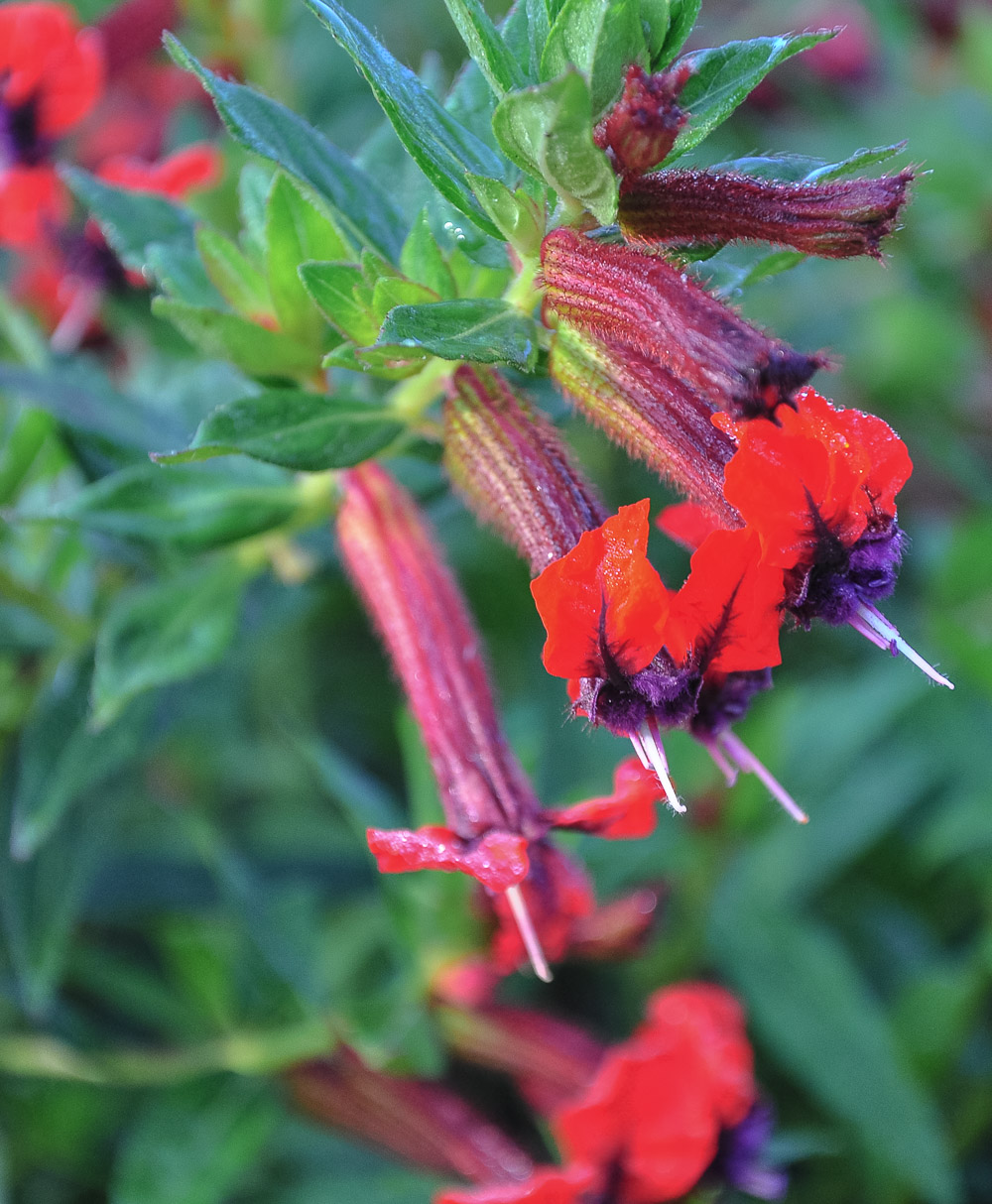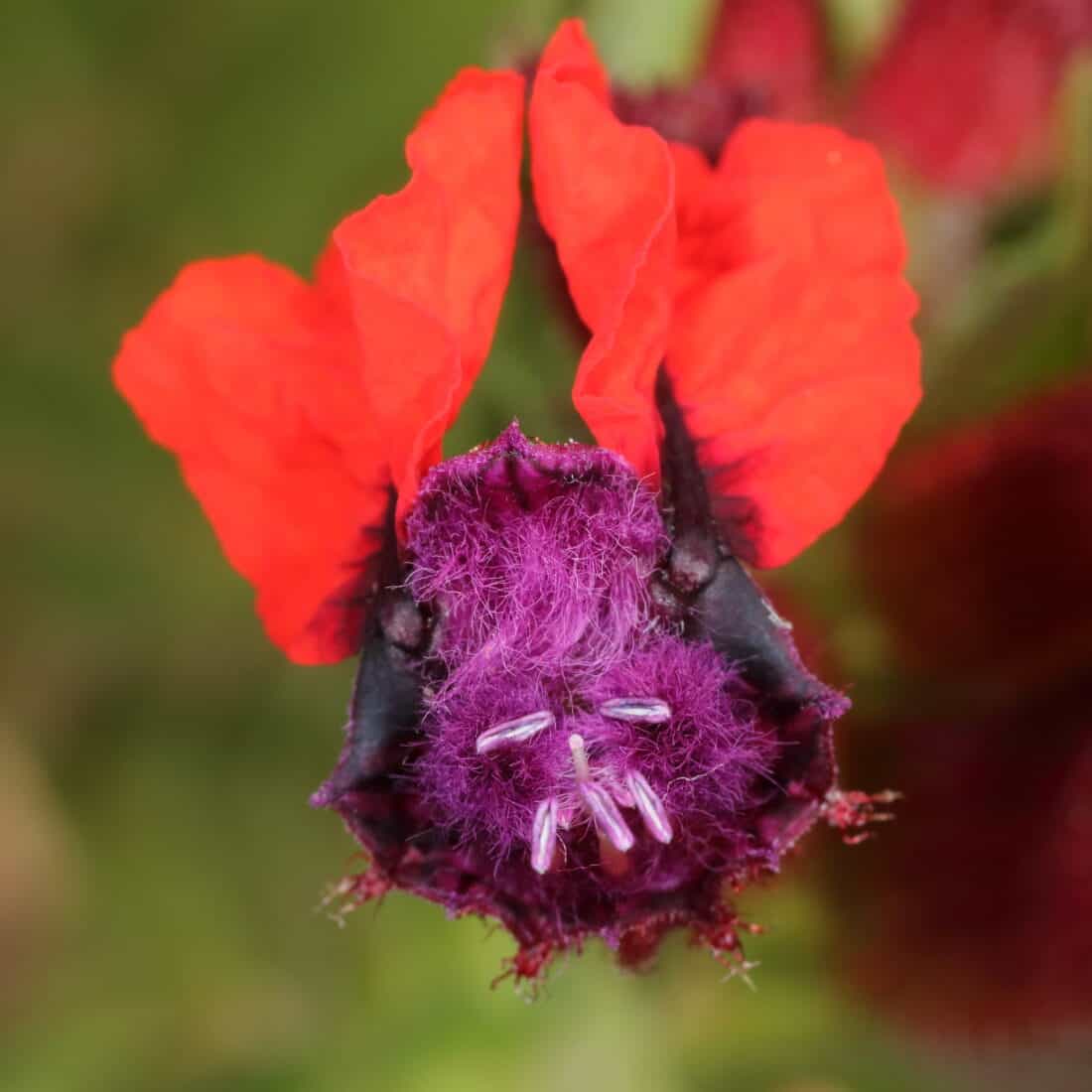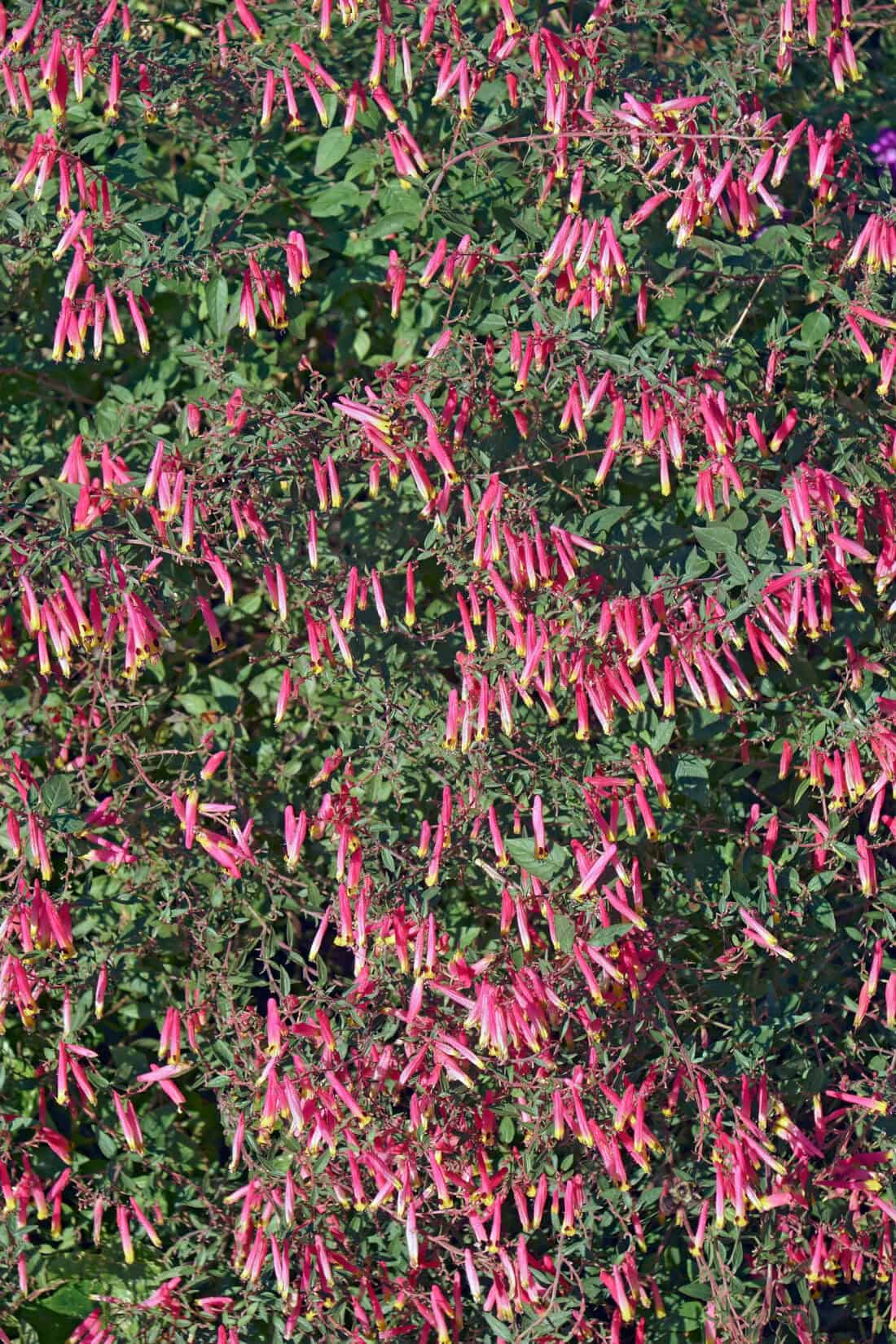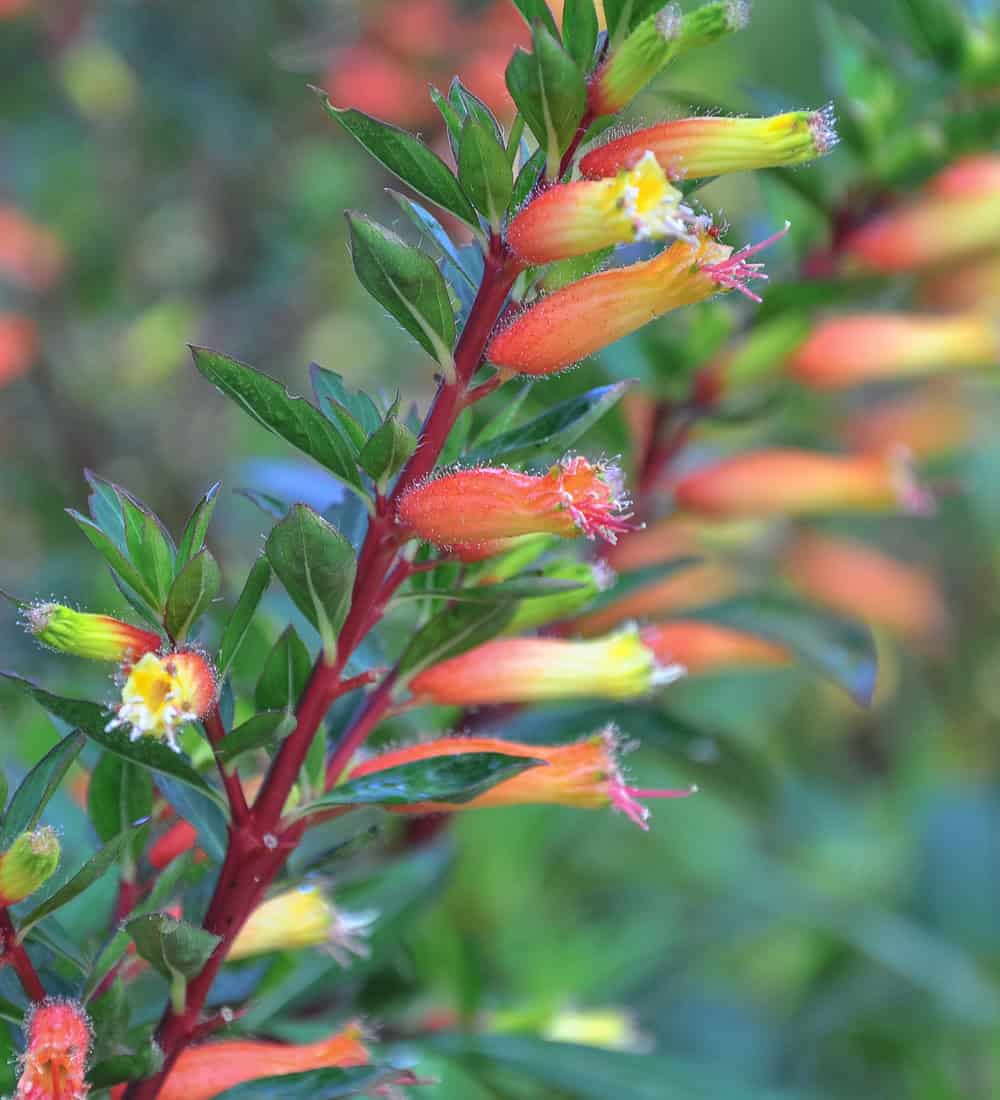Occasionally, I will get the urge to obsess over a group of plants. I have gone mad for Magnolias, frenetic for Fothergilla, hysterical for Hydrangea, but now I am going crazy for a rediscovered genus. That genus – Cuphea – I am currently crazy for it.

Species of Cuphea
Cuphea plant takes me back to my college days and plant identification class. We had to learn two different Cuphea species: C. hyssopifolia and C. ignea or Mexican heather and cigar flowers, respectively.
Cuphea hyssopifolia was marginally hardy where I grew up in Raleigh, North Carolina and in mild winters, it would sometimes come back from the roots. I always thought they were cute but not show-stopping plants. A couple of years later, during a summer internship at Walt Disney World, I got to see Mexican heather growing in its full glory in Orlando. Over the 20 years since that summer internship, Cuphea and I would occasionally cross paths but never engage in a deep conversation.
The Bat Faced Cuphea

This year, I am starting to develop a Cuphea crush. The warm weather we have been having in New England has made our plants ignite. We are growing Cuphea llavea and C. micropetala. C. llavea is a small, mounding plant covered with small flowers that have a deep purple center and red tips to the petals. The bi-color effect is what gives it the common name of “bat-faced cuphea.”
Cuphea is one of those plants that doesn’t get nearly enough credit. It’s tough, long-blooming, and attracts pollinators like crazy. But the bat-faced cuphea (Cuphea llavea) That one’s got personality. It’s the kind of plant that makes you do a double-take in the garden because its flowers genuinely look like tiny bat faces—deep purple “ears” and a red “face” in the middle. It’s weird in the best way.
Other Cool Cuphea Varieties
Hummingbirds go nuts for all types of cuphea – the tubular flower is the just the right kind of plant architecture for them.
Cuphea is a diverse genus, so if you love C. llavea, here are a few others to consider:
- Cuphea ‘Vermillionaire’ – A standout for hummingbird gardens, this one pumps out fiery orange blooms all season and is an absolute pollinator magnet.
- Cuphea hyssopifolia (Mexican Heather) – A softer, ground-cover type with tiny lavender flowers. More delicate looking, but just as resilient.
- Cuphea micropetala (Candy Corn Plant) – The flowers look exactly like candy corn, transitioning from yellow to orange to red. A fall favorite.
- Cuphea ignea (Cigar Plant) – The bright orange flowers with white tips resemble burning cigars. A great container thriller (in the classic thriller, filler spiller formula) or a border plant.

Design Ideas for Cigar Plant
Cuphea plants play well with others but also shines in its own right. Here’s how to use it effectively in the landscape:
The Ultimate Pollinator Patch
Pair Cuphea llavea with salvias, lantana, and agastache to create a hummingbird and butterfly buffet.
Add ornamental grasses (Muhlenbergia capillaris for pink clouds or Bouteloua gracilis for quirky blue tones) to contrast the flower shapes.
Hot & Dry Border
Combine Cuphea ignea (cigar plant) with succulents like sedum or euphorbia, echinacea, and penstemon for a dynamic, heat-loving border.
Candy Corn Drama for Fall
Use Cuphea micropetala with dark-leaved dahlias, rudbeckia, and purple fountain grass for a high-contrast autumnal look.
Container Magic
Use Cuphea ‘Vermillionaire’ as the thriller in a pot with trailing calibrachoa and ornamental sweet potato vine. Also, try Cuphea hyssopifolia as a filler in a more structured container with dwarf agapanthus and variegated liriope.
Tropical-Inspired Chaos Garden
Cuphea plants’s bold colors make it perfect for a riotous, tropical-style border. Mix it with Canna lilies, coleus, elephant ears, and banana plants for a lush, jungle-like effect.
Cuphea is one of those plants that delivers in both style and function. If you want a plant that’s unique, low-maintenance, and wildlife-friendly, it’s a solid choice. Which varieties are you leaning toward?

-Rodney
(images by Rodney Eason, unless otherwise noted)
+comments+